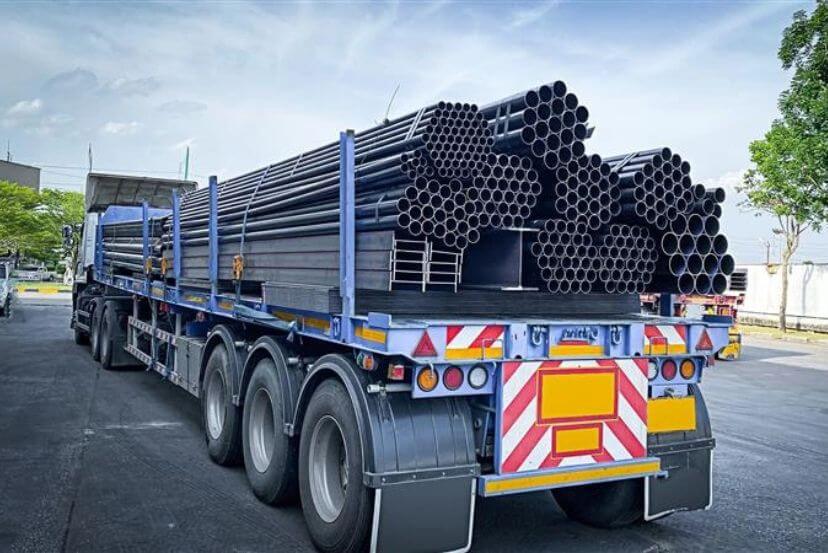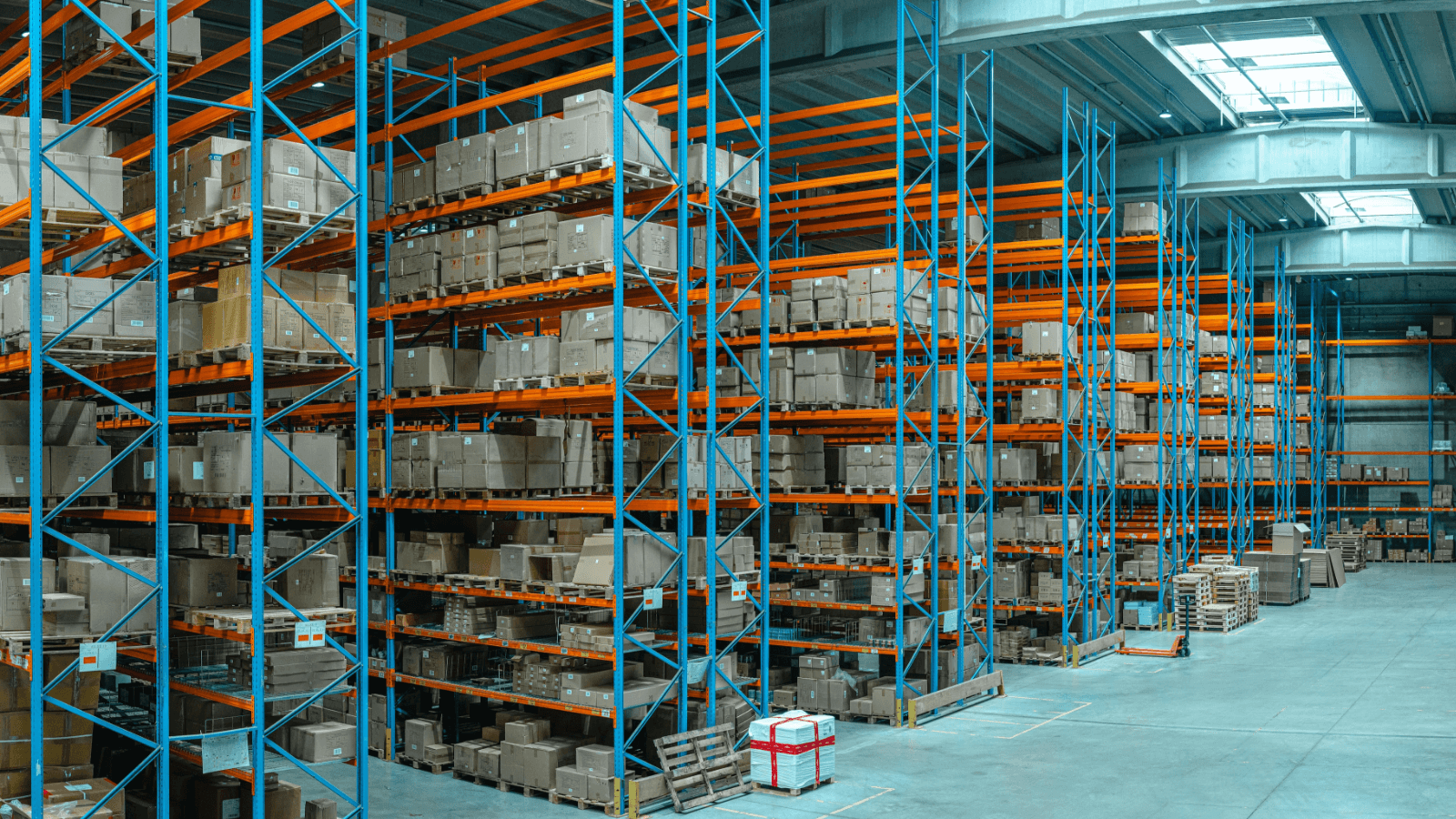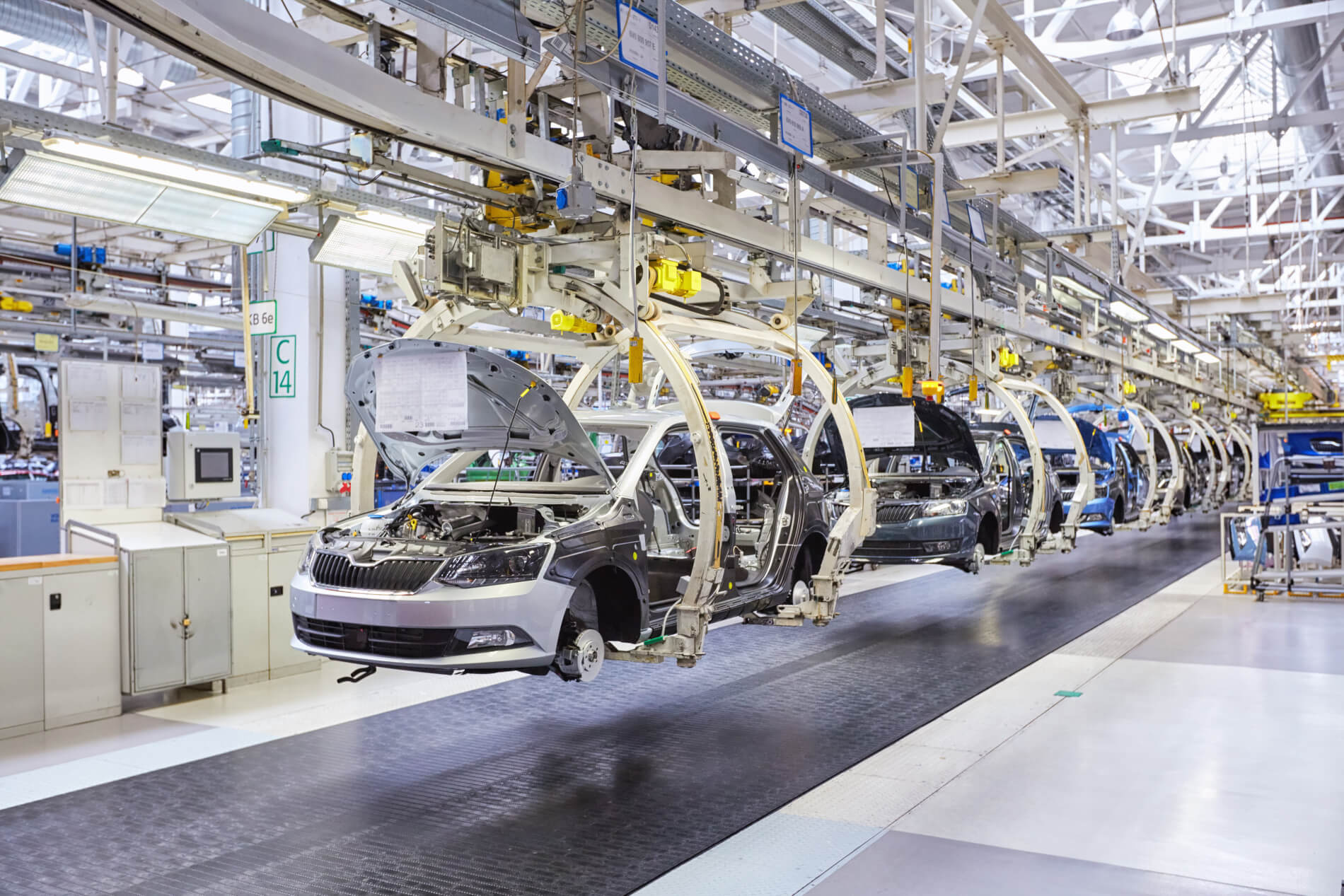How Procurement Managers Can Negotiate Better Prices for Ferrous Pipes?

How Procurement Managers Can Negotiate Better Prices for Ferrous Pipes?
Procurement managers play a crucial role in securing quality materials at the best possible prices. Negotiating for ferrous pipes, particularly GI (Galvanized Iron) pipes, requires a balance of knowledge, preparation, and strategy.
This blog outlines actionable strategies to help procurement managers negotiate effectively for ferrous pipes, ensuring an optimal balance of cost efficiency and quality.
1. Research Market Trends and Pricing
Staying informed about market trends and price fluctuations is critical for successful negotiations. Keep track of raw material costs, industry demand, and supplier competition.
- Why it matters: Suppliers often set prices based on market dynamics. Having up-to-date information gives you an upper hand in negotiations.
- How to research: Utilize industry reports, network with procurement peers, and employ digital tools to monitor ferrous material pricing trends.
Tip: Always compare prices from multiple suppliers to establish a baseline before initiating talks.
2. Build Long-term Supplier Relationships
Establishing trust and rapport with suppliers can lead to better deals over time. Suppliers often provide better discounts and terms to loyal and trusted customers.
- Key actions: Communicate regularly with suppliers and make timely payments.
- Value of partnerships: Strong relationships can help you secure exclusive offers or priority delivery during high-demand periods.
Tip: Aim for mutually beneficial arrangements that strengthen supplier relationships.
3. Bulk Purchases and Volume Discounts
Procuring in bulk can significantly lower per-unit costs, making it a key strategy for effective negotiations.
- Plan ahead: Forecast your organization’s pipe requirements and place larger orders when feasible.
- Leverage economies of scale: Suppliers prefer larger contracts as they provide stability, making them more willing to offer discounts.
Tip: If storage is a concern, explore staggered delivery options to manage inventory without compromising on discounts.
4. Evaluate Quality Standards
Quality often drives pricing in the ferrous pipes market. Make sure to specify your quality requirements upfront.
- Why it matters: Suppliers might charge extra for superior coatings, higher tensile strength, or corrosion resistance.
- Actionable approach: Ensure the supplier meets industry standards (e.g., IS or ASTM specifications). Compare the cost-benefit ratio of premium pipes versus standard ones.
Tip: Request quality certifications and conduct thorough inspections of samples before finalizing an order.
5. Negotiate Beyond Price
Price isn’t the only factor that can optimize costs. Expand negotiations beyond price to include aspects like:
- Payment terms (e.g., extended credit periods).
- Free or discounted shipping.
- Additional services like customized sizes or pre-cut lengths.
Tip: Prioritize the overall value proposition rather than solely focusing on the price.
6. Time Your Purchases Strategically
The timing of your purchase can significantly impact pricing.
- Optimal timing: Suppliers often offer discounts during off-peak seasons or at the end of a financial quarter/year.
- Market observation: Monitor when raw material costs dip or when suppliers run promotional offers.
Tip: Be proactive and place orders before high-demand periods, such as infrastructure project launches or peak construction seasons.
7. Prepare for Negotiations
Effective negotiation requires thorough preparation. Engage suppliers confidently, backed by data and a well-defined strategy.
- Preparation checklist:
- Define your budget and acceptable price range.
- Highlight your potential as a repeat customer.
- Present alternative quotes to validate your position.
Tip: Adopt a professional tone and remain open to compromise when necessary to secure long-term benefits.
Negotiate Best Prices for Your Next Ferrous Pipes Purchase
Effective negotiation for ferrous pipes involves balancing cost savings with quality and fostering strong supplier relationships. By researching the market, building partnerships, and employing strategic negotiation techniques, procurement managers can achieve optimal outcomes.
Ready to enhance your procurement process? Discover our extensive selection of high-quality GI pipes and request competitive quotes today.
Top 3 Questions Every CPO Should Ask to Transform Procurement Today

Top 3 Questions Every CPO Should Ask to Transform Procurement Today
In India and worldwide, the current economic world order has been marked by volatility, inflation and various supply chain disruptions in recent years. Global inflation is expected to rise to 8.8% this year. Knowing this, CPOs must consider how these factors will impact enterprise procurement.
Inflation directly impacts costs across the supply chain, leading to higher outlays in the procurement cycle. Unorganized areas like MRO in procurement may be particularly adversely affected by this. Volatility further adds to the problem by making it harder to predict costs and prepare a procurement budget.
Given this landscape, procurement leaders must head the change and address today’s critical challenges in business procurement. And you can do this by asking the right questions and taking the proper steps.
Top 3 Questions Every CPO Should Ask to Strengthen the Supply Chain
The current market may have challenges, but it also offers unique opportunities for procurement leaders to set new and more ambitious goals for their organizations. Here are three key questions that CPOs must ask and answer to stay ahead of the curve.
1.Have you quantified the effect of disruptions on your supply chain?
The first step towards mitigating the effect of disruptions on your supply chain is to quantify the impact. To begin with, assess the additional outlays and the reduction in margins resulting from inflation or volatility.
2.How well do you understand the industry dynamics of your suppliers and vendors?
Another vital aspect of reimagining procurement for the present day is understanding the industry dynamics of your suppliers and vendors. These insights will help you protect your margins.
3.How are you incorporating today’s lessons into tomorrow’s procurement strategy?
Above all, you must include the procurement lessons you learn from today’s disruptions in tomorrow’s procurement strategy. This is a highly effective way to future-proof your supply chain.
The Road Ahead: How You Can Mitigate Future Procurement Risks with the Right Tools
You can use commercial, technical and cross-functional levers to protect your enterprise procurement from additional risks and catastrophes.
Commercial levers
Commercial levers include regional diversification in sourcing supplies, offshoring and nearshoring to partner with new vendors and secure the supply chains. These techniques can bring in more opportunities for cost savings.
Technical levers
Businesses can also look beyond commercial levers and adopt technical levers to manage disruptions. For example, redefining material selection, insourcing and upgradation of procurement technology are effective strategies in this category. Another measure your business can take in this segment is comprehensive supply chain digitization to make procurement less expensive and more efficient.
Cross-functional levers
There are times when the key to future-proof your business is a combination of various strategies across different functions. By combining measures that promote a better understanding of the vendor ecosystem, rapid innovation and flexibility in sourcing, CPOs today can strengthen enterprise procurement quickly.
Moglix e-catalog solution enabled India’s second largest tractor manufacturer to save up to 85% of staff hours on procurement. They achieved this by digitizing their procurement process, which previously relied on legacy ERP solutions that resulted in poor visibility and low-quality data. This holistic approach to digitization led to significantly better supply chain visibility and ultimately delivered cost and time savings.
Want to keep pace with the new normal? Upgrade your procurement plan today!
Transform your organizational supply chain with contemporary solutions from Moglix, such as digital procurement, optimization of MRO categories in your purchases and simplified packaging. If you’re keen on transforming your procurement, send us your business query at info@moglixbusiness.com.
Are you looking to streamline your procurement process and gain 100% visibility over indirect spending?
Then look no further!Download the case study now
Complete Guide on Vendor Management for Enterprises

Complete Guide on Vendor Management for Enterprises
Procurement leaders today have their priorities right because surveys reveal that nearly 42% of CPOs aimed to prioritize supplier management this year. And around 70% have already met their goals for risk management. But if your business is still grappling with the ropes and trying to master the art of vendor management in this age of digital procurement, here is a handy guide that can help.
First things first: What is Vendor Management?
Vendor management is finding the right vendors and suppliers for your enterprise purchases and adopting the best practices to manage your vendor relationships. It encompasses vendors across various aspects of purchasing, such as raw materials, supplies, services and MRO procurement.
Vendor management includes supplier analysis, contract management, sourcing, invoicing and periodic reviews. The best vendor management programs are mutually beneficial for the suppliers and the purchasing organization.
The Need for Vendor Management in Procurement
If nearly all the top procurement professionals focus on streamlining vendor management, there has to be a reason for this. So here is a closer look at why your business needs to make vendor and supplier management more efficient today.
1.Optimization of Vendor Performance
Vendor management software helps you track and assess supplier performance over time. You can use these insights to identify problem areas, fix roadblocks, and improve your vendors’ overall performance.
2.Efficient Risk Management
Robust vendor management also mitigates various risks on the vendors’ side of the supply chain. You can identify risks and vulnerable areas and then take timely measures to curb these weaknesses before it’s too late.
3.Cost Reductions
Areas like office supplies and MRO categories in procurement are particularly vulnerable to uncontrolled spending. Vendor management systems make it possible to streamline these areas and achieve optimal cost reductions wherever possible
4.Better Supplier Relationships
Effective supplier management solutions include creating and maintaining mutually beneficial relationships with your vendors. It encourages setting transparent lines of communication between your procurement teams and your vendors and builds loyalty between the parties involved.
5 .Key Risks You Can Mitigate with a Robust Vendor Management Program
Partnering with suppliers outside your organizational circle exposes you to many risks. However, a solid vendor management strategy can reduce or eliminate many risks. Here is a preview of the top supplier risks mitigated this way.
1.Catastrophic Risks
Catastrophic risks like the pandemic, war and other natural disasters can disrupt the supply chain and make it nearly impossible for vendors to carry on their business as planned.
2.Operational Risks
Operational risks include contingencies stemming from weaknesses in the suppliers’ business operations. Some common examples include power outages, system failure, infrastructural damage etc.
3.Information Security Risks
When data is compromised due to poor information technology protocols, the risk of data leakage is high. Your business information could also be compromised in such situations.
4.Compliance Risks
If the suppliers you partner with do not comply with legal requirements or regulatory norms, this oversight could also affect your supply chain.
5.Geopolitical Risks
This risk stems from wars, political or social unrest and other such developments. It is beyond your vendors’ control but can still affect your procurement plans substantially.
Vendor Management Best Practices: 3 Steps You Can Take to Master the Art Today
A comprehensive vendor management program gives your business a competitive edge and allows your enterprise to stay ahead of the curve. Here are some best practices you can incorporate into your supplier management system.
1.Create a Comprehensive Supplier Database
An updated database of vendor details makes it easier to plan your purchases, handle invoicing promptly and track supplies and purchases effortlessly. It also helps you maintain good relationships with your suppliers and quickly reach out in case of any emergencies.
2.Assess the Risks and Have Counteractive Measures in Place
Vendor management also requires you to analyze the potential risks that your vendors pose to your supply chain. You can use the information you gather from this exercise to set up countermeasures in place in the event of any disruption due to such risks becoming threats.
3.Choose Suppliers Whose Goals Align With Yours
For optimal benefits, your vendors’ values and practices must align with your business objectives and ethics. This benefits both parties involved in any procurement transaction across the supply chain. So, ensure that your vendor management solutions enable you to choose suppliers whose goals align with yours.
Keen on Upgrading Your Organization’s Vendor Management?
If you answered yes, Moglix has the ideal solution for your business. We give you the advantage of integrated procurement solutions and offer visibility into the KPIs of your vendors, so you can streamline vendor management and make procurement bidding more competitive.
A mid-size heavy engineering and construction OEM with a legacy of more than 70 years was marred by a heavily fragmented vendor base with zero logistical support. Moglix enabled vendor consolidation to unlock cost, time, and process efficiencies at scale through digital procurement transformation.
Please send us your business query at info@moglixbusiness.com today to switch to digital procurement and transform supplier management in your organization.
Are you looking to streamline your procurement process and gain 100% visibility over indirect spending?
Then look no further!Download the case study now
Blending in ESG adoption in procurement for 2023 and beyond

Blending in ESG adoption in procurement for 2023 and beyond
Did you know that your sustainability choices could directly impact your company’s top line? That’s because 83% of consumers and 91% of business leaders believe companies must prioritize ESG practices. An increasing segment of the global customer base is also leaning toward businesses that put sustainability at the forefront of their decisions.
It wouldn’t be a stretch to say that if you want to stay in the game in the coming years, you will need a solid ESG framework in your company. That said, some areas may be given more weightage than others in the race to sustainability. For example, as Deloitte reports, around 66% of companies focus on energy efficiency, 57% on educating their workforce about climate change, and 55% on reducing air travel.
But one area could often be left behind in the journey towards building a more sustainable ecosystem in your business. We’re talking about procurement and the supply chain, of course.
Decoding sustainable procurement: What is it and why does it matter?
Sustainable procurement involves sourcing and purchase processes designed around essential ESG criteria. It is environmentally friendly, reduces waste, and promotes fair trade. Here’s why you need to include procurement as a part of your organization’s ESG strategy.
- It lowers costs:
Sustainable practices minimize energy usage and wastage, eventually helping you save costs significantly.
- It could lead to better revenue:
With more buyers prioritizing ESG factors, you will find attracting and retaining customers easier if you adopt sustainable procurement practices.
- It improves brand reputation:
Consistently embracing sustainability across various verticals in business procurement can bolster your brand value and future-proof your supply chain.
3 easy ways to give your procurement strategy an ESG upgrade
Here is what you can do to adopt sustainable practices for sourcing raw materials, components, and MRO in procurement strategies.
- Identify suppliers who prioritize ESG.
If you partner with suppliers who also give more significant weightage to ESG criteria, it becomes easier for you to keep your procurement strategy sustainable.
- Be prepared for adjustment pains.
Implementing a sustainable procurement system may have hurdles like knowledge gaps, lack of support from suppliers, or trouble finding the right solutions. Have a plan in place to work around these issues.
- Create an ESG-oriented procurement strategy that works for you
There is no one-size-fits-all sustainable strategy for all businesses. Instead, you must find the areas in your procurement plan that need to be revised and aligned with your ESG goals and draw up a strategy accordingly.
Accelerate ESG adoption in procurement in 2023
In the coming year, the time is ripe to set new sustainable goals for your procurement strategy and streamline sourcing and purchases for your business. If you’re eager to transform your MRO procurement, Moglix may be the partner you need. Please send us your business query at info@moglixbusiness.com.
The era of Digitization in MRO procurement: How your organization can save BIG in indirect spending!

The era of Digitization in MRO procurement: How your organization can save BIG in indirect spending!
MRO, which stands for Maintenance, Repair, and Operations, is a buzzword that’s of great significance in industrial procurement. Often overlooked in favor of other purchases, most businesses’ MRO procurement supply chain is highly fragmented and greatly dependent on manual procedures. This can be a costly mistake because digitizing MRO procurement can bring in savings as high as 15%.[1]
Although the procurement of various other inventories and services like raw materials, capital equipment, and facilities contracts are witnessing rapid digitization, MRO procurement remains weighed down by tedious manual procedures. If your organization has yet to catch up with e-procurement solutions, the time may be just right to bring about some much-needed digitization in MRO now.
4 ideas to help your organization save big on MRO procurement:
- Cost savings via vendor consolidation
The network of vendors for MRO procurement is highly fragmented. This makes it much harder for businesses to manage vendor contracts and standardize procurement costs. Digitization of the process helps turn this around by identifying and consolidating the best vendors in the market. Your organization can then rely on a streamlined network of vendors to meet its MRO requirements in a cost-effective manner and bring you real-time track and trace visibility of your current suppliers.
- Optimization of inventory
Ineffective inventory management may lead to a shortage of MRO supplies or overstoring MRO items can slowly eat your costs. In fact, poor internal MRO supply chain practices lead to over 40% of unplanned downtime.[2] Rushed procurement to meet emergency needs can then result in cost-based compromises. But with digital procurement plans in place, you can be assured that MRO inventory in your organization will be sufficiently optimized to meet demand seamlessly and keep logistics cost reasonable.
- Reduction of losses related to compliance and quality issues
Compliance and quality issues in MRO supplies often lead to unexpected additional costs for organizations. A digital interface makes compliance easier and simultaneously offers quality assurance for MRO supplies. In turn, this allows organizations to save money on rectifying or dealing with the problems associated with low-quality MRO inventory.
- Complete automation of the purchase-to-pay journey
Digitization in MRO also eliminates a host of low-value tasks in the journey from MRO purchase to payment. E-invoicing, digitization of inventory management, ERP integration, and digital payments all help plug cost leakages in the manual purchase-to-pay journey. Automation also improves the overall efficiency of procurement processes and gives your organization a competitive advantage.
Transform your MRO procurement today
Chief Procurement Officers across the globe are prioritizing e-procurement in the MRO supply chain. To stay ahead of the curve, you need to give your MRO purchases a digital upgrade with the latest solutions from Moglix. We revolutionize conventional procurement procedures with a digital transformation approach and optimize procurement through Vendor Consolidation, Digital Catalog for MRO supplies, Moglix-powered stores, and VMI to manage your inventory. Looking forward to transforming your procurement? Just send us your business query at info@moglixbusiness.com
Takeaways for CPOs from Indian Auto Industry’s Most Successful VMI Program

Takeaways for CPOs from Indian Auto Industry’s Most Successful VMI Program
It’s amazing what a vendor managed inventory system can do to your supply chain. There is a lot to learn from the most successful vendor managed inventory systems for CPOs.
One of Indian auto industry’s leading manufacturers has put in place a successful vendor managed inventory system. The VMI program has enabled it to sustain cost leadership over the long term. Here is an overview of their VMI program.
75% of Components Sourced from Local Suppliers
The auto manufacturer has focused on building strategic relationships with suppliers from the ground up through vendor consolidation. A key aspect of its localization has been to develop captive suppliers that hold inventories at their warehouses.
These suppliers’ warehouses are located within a defined logistical radius. Vendor managed inventory systems allow the auto manufacturer the convenience of on-demand onsite delivery within a short period of time.
100% Visibility into Clean Procurement Data
The auto manufacturer uses an automated inventory replenishment and reordering system. All strategic suppliers have integrated their inventory holding data with that of the single digital procurement solution of the auto manufacturer.
Collaborative data sharing has paved the path for collaborative planning among the auto OEM and its suppliers. Each stakeholder in the supply chain has complete visibility into the evolving dynamics of demand and supply.
JIT Delivery and Lean Inventory Holding
The automotive manufacturer has a well-defined system for suppliers to send their industrial goods to its plant premises. The auto manufacturer allows suppliers’ trucks to enter its plant premises 30 minutes before the scheduled time for stock replenishment.
This has radically reduced working capital blockage. It has also unlocked more real estate for storage of multiple categories of indirect procurement items, and reduced warehousing costs.
6s, Kanban, and Bin Card at Supplier’s Warehouses
The automotive manufacturer conducts periodic visits at its suppliers’ warehouses. During these visits they audit the total quality management systems and best practices of suppliers. As part of the vendor managed inventory program suppliers are required to adopt 6s, kanban and bin card systems at their warehouses.
Moglix provides vendor management inventory solutions that enable both agility at scale and reliability to your indirect procurement. To know more about vendor consolidation and vendor managed inventory solutions for indirect procurement, visit https://blog.business.moglix.com/optimize-mro-procurement
How Can Site Managers Calculate Infra Material Quantities for Concrete

How Can Site Managers Calculate Infra Material Quantities for Concrete
While a project site is a self-contained system, it relies on specific processes to keep things running well. This is where a project manager and their team come in to ensure that each system delivers the needed relationships and output on time and budget.
From managing the staffing to controlling the raw materials that flow in, this is the job of a site manager. Of course, one of the most critical materials used in almost all construction sites is concrete. Depending on construction, a structure may include beams, slabs, columns, and foundations.
The total volumes of each structural element or part of a member will determine the volume of concrete required for this structure. Knowing how much to order is incumbent on understanding the use and volumes needed to complete the structure.
The Application of Concrete in Construction
Concrete consists of coarse aggregates (particulate elements including sand, gravel, crushed stone, and slag) bound together with cement. Cement is a compound that binds things together, such as aggregate, by bonding to them and drying over time. Although many other cement forms exist, Portland cement is the most popular and used in concrete, mortar, and plasters.
Prerequisites for Right Quality Concrete
Proper concrete demands proper mixing for the creation of robust and homogeneous concrete. Concrete production is time-sensitive, and because it is manufactured as a viscous fluid, it must be poured before it hardens.
For applications that demand a short set time, certain concrete is specifically engineered to harden faster. Concrete is also blended into dryer shapes in some manufacturing settings to make precast concrete goods such as concrete walls.
Factors That Improve the Strength of Concrete
The strength of the concrete can be increased during the early stages of curing by keeping it damp. This is accomplished by using procedures such as spraying concrete slabs with chemicals that form a water-retentive coating or ponding, which involves submerging concrete in water and wrapping it in plastic.
Knowing the process and the outcome is essential, as this will determine how to assess the consumption. With this knowledge, the site manager of infrastructure companies can build a bill of materials for all the necessary raw materials.
The Absolute Volume Technique to Calculate Infra Material Quantities
The absolute volume technique can determine the quantities of ingredients for concrete, such as cement, sand, and aggregates, needed to produce the required amount of concrete with given mix proportions.
According to this technique, the volume of fully compacted concrete is equal to the absolute volume of all concrete components, including cement, sand, coarse aggregates, and water.
Site managers, site engineers, civil engineers, and mechanical engineers need to work together to assess the procurement of raw materials. The best way is to use one of the many calculators available freely online. These calculators also highlight the importance of other factors that affect concrete procurement for infrastructure development projects.
What Does the Road Development Boom Mean for EPC Companies

What Does the Road Development Boom Mean for EPC Companies
“My target is to achieve 100 km per day of highway construction,” said Nitin Gadkari, Union Minister for Road, Transport & Highways, addressing a virtual event organized by industry body CII in August of 2021.
This was the road development goal he set for the various EPC companies in India and the different governing agencies to pull up their socks and build using sustainable material, but to also build faster!
The emergence of the National Infrastructure Pipeline is suggestive of what to expect from India’s government going forward.
The National Infrastructure Pipeline (NIP) is a five-year package of social and economic infrastructure projects in India with a total sanctioned budget of 102 lakh crore (US$1.4 trillion). The pipeline was initially announced by India’s Prime Minister Narendra Modi during his Independence Day speech in 2019.
As part of the NIP, roadways, expressways, highways, road construction projects in India, railways and power sector assets will encompass over 66% of the total estimated value of the assets to be monetised. The remaining upcoming sectors include telecom, mining, aviation, ports, natural gas, and petroleum product pipelines, warehouses, and stadiums.
For EPC companies in India, this boom in road development projects means they are now in a position to build back better. However, procurement of construction materials will be critical for them to complete these infrastructure development projects within budgeted time, cost and quality.
Timeliness: EPC companies in India will require an agile supply chain for on-time procurement of construction materials. With a digital procurement solution, they can now streamline their sourcing, logistics, and even payments.
It results in the faster delivery of turnkey projects than a traditional model of offline procurement. Simple aspects like being able to digital monitor the various stages of the logistics journey lead to better visibility into the time to sustain in case of a disruption.
Cost: EPC companies need to ensure they are in the best position to negotiate the best cost. A diverse and inclusive supplier base is the key to getting the most competitive cost quotations on construction materials.
A diverse supplier base managed through a single point of contact enables raw material suppliers to be competitive. EPC companies can get the best product at the lowest price point, without skimping on delivery, quantity, or quality.
Quality: Meeting the custom quality specifications for materials like TMT bars, cement, plates, steel, and ready-mix concrete is critical for EPC companies to build high quality roadways, expressways, highways, and bridges. With clean procurement data, EPC companies can reduce the risks of order-supply mismatches.
EPC companies in India will be the change-makers, enabling transformation and fueling the growth of infrastructure development projects in India.
Being in the unique position to enable the procurement of construction materials such as TMT bars, cement, plates, and ready mix concrete, gives EPC companies an edge to deliver the value that the National Infrastructure Pipeline seeks to create.
If you are in the business of infrastructure, construction, or development, then chances are you will benefit from Moglix procurement solutions for infrastructure development projects. To know more visit https://business.moglix.com/our-solutions/infrastructure
Tesla’s Record Results Despite Supply Chain Disruption

Tesla’s Record Results Despite Supply Chain Disruption
Tesla has weathered its share of supply chain disruptions in a manner “unrivaled in the auto industry”. While other automobile manufacturers have reported a decrease in sales, Tesla has bettered it’s net earnings.
It had posted USD 1.14 billion in the second quarter of 2021. In the third quarter, Tesla posted a record quarterly net earnings of USD 1.62 billion and sales of 240,000 vehicles.
What Tesla Got Right But Others Did Not? Managing Multiple Supply Chain Disruptions
All automobile manufacturers were affected by global semiconductors shortages, which left procurement professionals in the automobile industry short on accessible stock and consumers with fewer options.
Many issues, including semiconductor shortages, port congestion, and rolling blackouts, have hampered automobile manufacturers’ ability to maintain plants functioning at full capacity. Even Tesla has conceded that global supply chain disruptions had made the achievement a little challenging.
However, Tesla got three things right that allowed it to navigate across troubled waters. These are supplier base management, collaboration with suppliers, and better forecasting and planning.
Supplier Base Management and Chip Substitution: Agility at Play
Elon Musk, CEO of Tesla, revealed that the company handled the worldwide chip shortage by upgrading its car software to handle alternate processors.
Due to a growing demand for new automobiles, the gap in supply upended the auto industry. It resulted in factory shutdowns, longer wait times, and higher pricing.
However, Tesla has over the years invested in its supplier base management program. It has built a diverse and inclusive supplier base enabling it to switch to different chips and develop the software in a few weeks.
Working with Vendors to Co-Create a Custom Product: Collaboration in Focus
Tesla was able to quickly put together a custom product. Tesla’s ability to identify the right supplier through a pre-defined approval system enabled it to co-create the customized product in a very short period of time.
It enabled the production, engineering, and supply chain teams to quickly move forward and build the product according to specifications that were pre-set. Tesla’s collaboration with suppliers enabled it to demonstrate agility at scale for its indirect procurement.
Early Visibility for Better Forecasting and Planning: Digital Supply Chain Transformation
Tesla was able to identify the challenges quite early on. Its digitally integrated supply chain with multiple suppliers, logistics services partners, and warehouses onboard worked as an early warning and control system.
Early visibility into the divergence of its supply chain KPIs from expected values allowed it to pierce the mist on the screen. It enabled the automobile manufacturer to forecast and plan better.
To know more about how an indirect procurement solution can work for automobile manufacturers, reach out to Moglix. Explore the best indirect procurement solutions for automobile companies. Click here to know more: https://blog.business.moglix.com/optimize-mro-procurement
This Sea Link Bridge is Rewriting Procurement for Infra Projects in India

This Sea Link Bridge is Rewriting Procurement for Infra Projects in India
The Mumbai Trans Harbour Link (MTHL) is also known as the Sewri Nhava Sheva Trans Harbour Link. It is an under-construction 21.8 kilometres , freeway grade road bridge connecting the Indian city of Mumbai with Navi Mumbai, its satellite city.
Mumbai Trans Harbor Link: The Longest Sea Link Bridge in India
When completed, it would be the longest sea bridge in India. The bridge will begin in Sewri, South Mumbai, cross Thane Creek north of Elephanta Island, and terminate at Chirle village, near Nhava Sheva. The road will link to the Mumbai Pune Expressway in the east and to the proposed Western Freeway in the west. The sea link will contain a 6 lane highway, which will be 27 meters in width, in addition to two emergency exit lanes, edge strip and crash barrier.
A Turning Point for Infrastructure Development in India
The project is estimated to cost ₹14,262 crores (US$2.0 billion). The MMRDA awarded contracts for the project in November 2017; construction began in April 2018 and is scheduled to complete within four-and-a-half years. The MMRDA estimates that 70,000 vehicles will use the bridge daily after it opens.
Agility At Scale for Infrastructure Development in India
Infrastructure development in India has only ever been conducted on a PPP basis. The MTHL is one of the largest projects in India to be delivered using an EPC-Design-Build program. This project is also one that is being built in three phases or three packages as they are known – all of which follow the same design guidelines provided by the MMRDA and all other authorities involved.
The MTHL is being labelled as one of the most significant EPC projects in India. This means the sheer number of consultants, contractors, and companies involved in this project are already higher than ever before.
In addition to this, raw material procurement solutions for infrastructure companies will play a big role. EPC Companies, as well as all the materials used, need to go through rigorous approvals and inspections before being deployed on a project of this magnitude.
Raw Material Procurement Solutions for Infrastructure Companies: The Secret Sauce
This project represents just one thing. It is one massive infrastructure project with a lot of moving parts. The scale of raw material procurement is unprecedented. It is a single digital procurement ecosystem that allows granular control and visibility on the end to end supply chain.
It is also one of the first infrastructure development projects to rely on a fully digitally integrated procurement solution. The project is reimagining procurement for infrastructure development projects in India.
The Takeaway for Infra Procurement Organizations From the Project
The right procurement solutions for infrastructure companies can reduce the PR to PO cycle time in procurement by up to 80%. The agile PR to PO cycle time can result in 20% cost savings due to integrated supply chain, and even a 30% rise in operational efficiency.
All of these are a result of digital procurement maturity to track the end to end supply chain journey of raw materials. Any way you look at it, though, this project is rewriting procurement, as processes need to be quick, reliable, consistent, and efficient.
To know more about how an EPC solution can work for your construction or infrastructure project, reach out to Moglix. Explore the best raw material procurement solutions for infrastructure companies. Click here to know more: https://business.moglix.com/our-solutions/infrastructure
